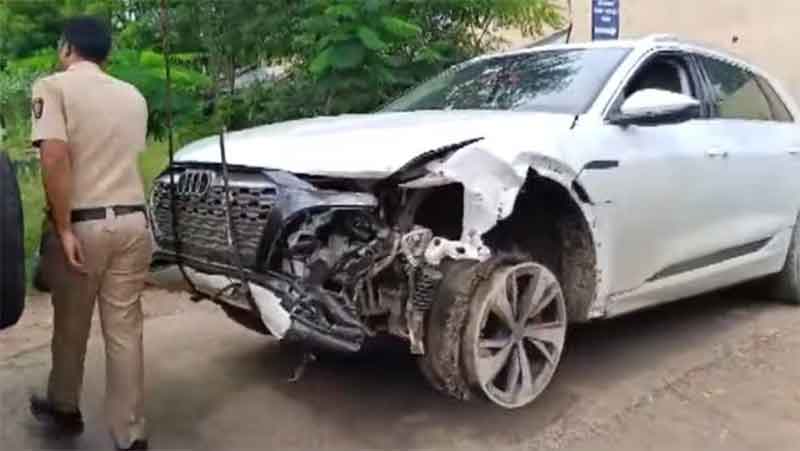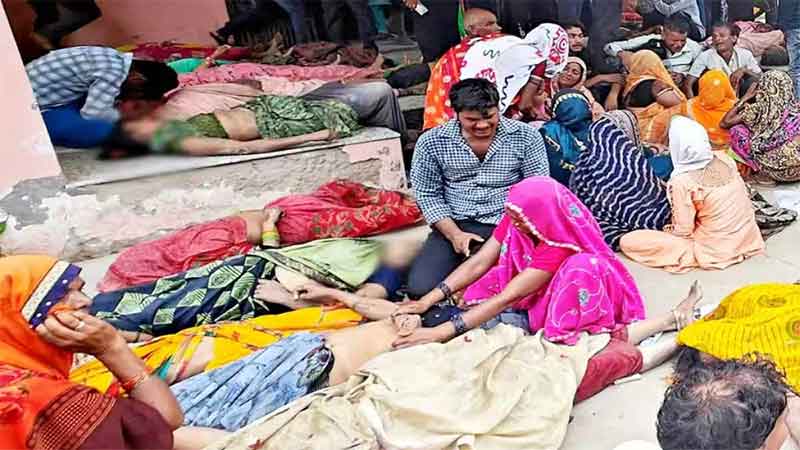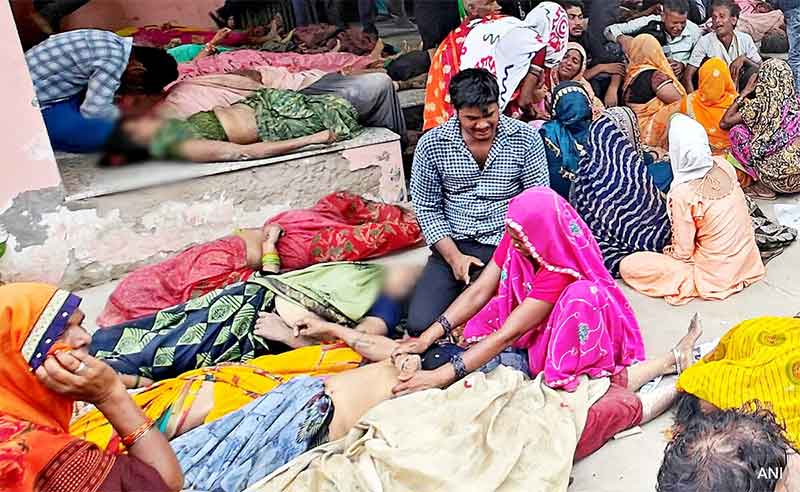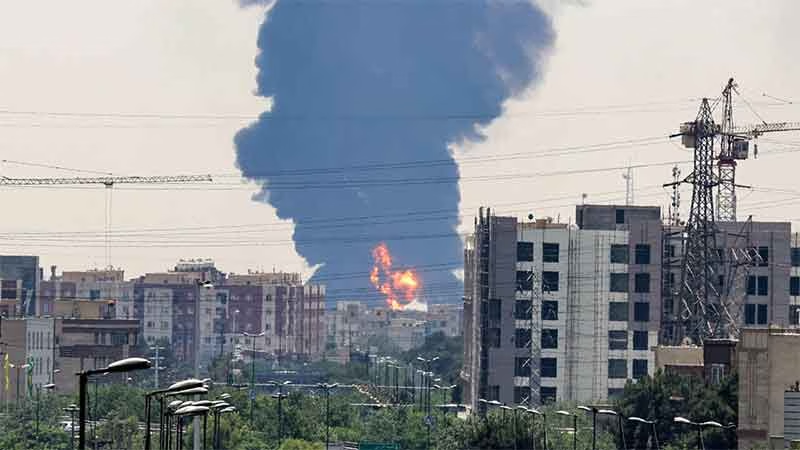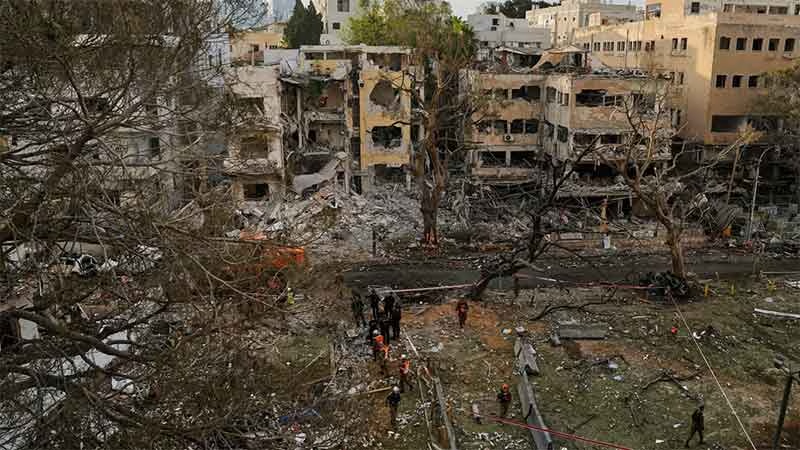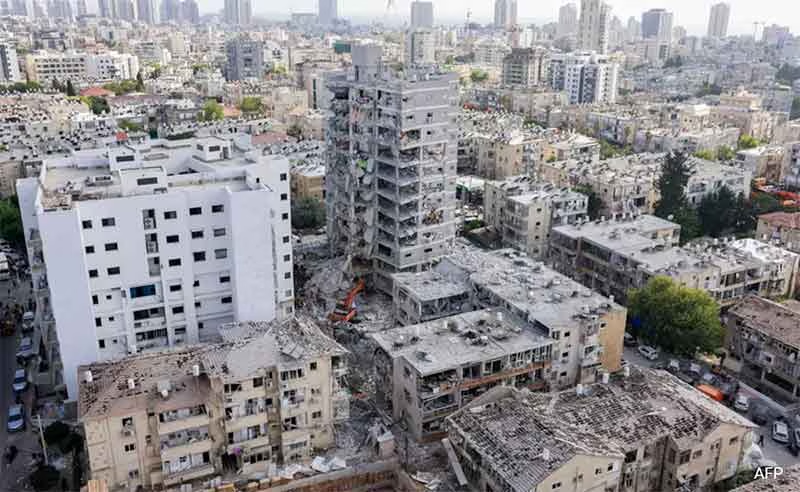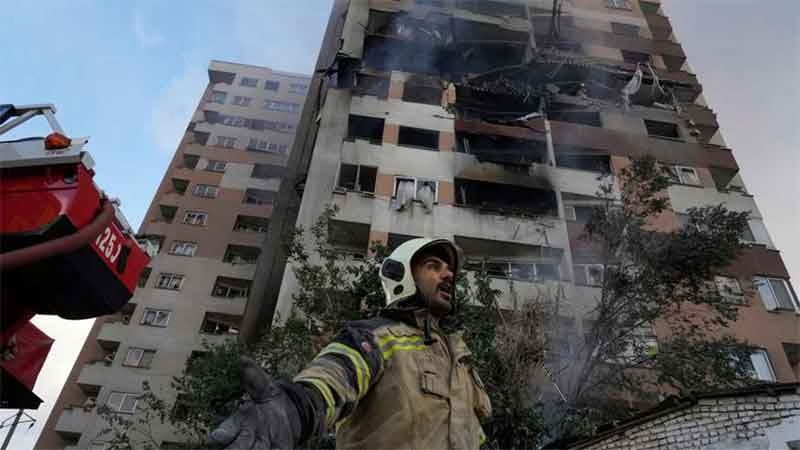
On 25th May, a Saturday evening, fire broke out in Rajkot’s TRP gaming zone, killing at least 27, including 9 children. The bodies of the deceased victims were completely charred, and individuals could not be identified. On the other hand, more than 31 families reported missing children. Victims age ranged from 12 to 45. DNA tracing with relatives was done to identify identities of the victims. Three owners of the gaming zone, who were co-partners, Yuvrajsinh Solanki, Rahul Rathod, Dhaval Thakkar, and their manager Nitin Jain, were booked under IPC sections 604, 308, 337, 338, and 114. An SIT was set up by the State government to investigate into the matter. Around seven junior officials of RMC were suspended, whereas police commissioner, deputy police commissioner, and municipal commissioner of Rajkot were transferred. Gujarat High Court took a suo moto PIL, wherein Justice Vaishnav, while hearing RMC’s defence, lambasted against the state and corporation’s civic authorities, “Honestly speaking, we do not have faith in the state machinery now after four years of orders passed by this court, this is the sixth incident that has happened. They only want lives to be lost, only then do they trigger the machinery.”
As a labour rights activist and researcher, I have closely worked with unorganised, migrant workers, working in unregulated, unprotected, and unsecured work setups in industries that include construction work, engineering and fabrication shopfloors, textiles and garment estates, foundries, storage and warehousing, loaders in agriculture mandis and food and vegetable markets in Ahmedabad. In recent times, one of the key demands raised by trade unions working with unorganised labour in unregulated work setups, has been around safeguarding workspaces through regulatory compliances established under various laws and rulebooks of administration. “Shramik yaha kaam karne aate hai, marne nahi” (workers come to cities to work, not to die), is an often repeated statement by migrant workers working in construction, factories, foundries, engineering, and many other high-risk sectors. Between 2017 and 2020, 3 people died and 11 injured each day, on average, due to accidents in India’s registered factories, as per data accessed from Ministry of Labour and Employment’s DGFASLI, accessed by IndiaSpend in November 2022 through an RTI request. The fact that this data is hugely under-represented, can be made out from the fact that only 10 percent of workers work in organised setups, and there is no systematic process of registering accidents and injuries arising at workplace. Since 2021, as many as 714 labourers have lost their lives in industrial accidents in the state, as stated by minister for labour, skill development and employment Balvantsinh Rajput in Gujarat State Assembly. All these accidents, even though only account for ‘reported incidents’ in ‘registered factories’, point out to a ‘regime of unregulation’ where safety measures, industrial compliances, measures for well-being of labour, ad-hoc industrial expansion, is favoured as against providing safe work that centers labour well-being, personal safety, and decent work environment.
One of the features in repeated workplace accidents, leading to fatal and non-fatal injuries and deaths, include not just lack of accountability at all administrative levels, but also transfer of responsibility from state to industry in cases of accidents. Such a shift is one of the features of increased contractualization and outsourcing procedures, in formal and informal sectors both. Jignesh Mevani, one of the legislators in Gujarat, has pointed out that even the workers recruited in sanitation and other works at MLA quarters, earn less than minimum wages because of contract and outsourcing systems. When contracts are imposed in jobs that are of permanent nature, responsibility including minimum wages, legal entitlements of workers, and workers safety during work, is transferred from principle employers and state authorities, to junior level safety officers and small contractors. In the incident of collapse of suspension bridge in Morbi, killing 135 people and leaving many others injured, the authorities arrested Mansukh Topiya and Madev Solanki, who worked as ticket-booking clerks on either end of the bridge; and Alpesh Gohil, Dilip Gohil, and Mukesh Chauhan, who worked as security guards at the bridge. They were arrested on the day after the incident. Whereas chargesheet against the principle owners who were tendered to construct the bridge, Jaysukh Patel of Oreva Group, came three days later. In a lot of accidents at construction worksites, it has been observed how the contractor shifts blame of accident on workers being in insobriety state, rather then the negligence in providing scaffolding, safety nets, safety belts, Personal Protective Equipment (PPEs), etc.
Supreme Court bench of P.S. Narasimha and Sandeep Mehta, on March 12, 2024, held that workers employed to perform perennial/permanent nature of work couldn’t be treated as contract workers under the Contract Labour (Regulation & Abolition) Act, 1970 to deny them the benefit of regularization of a job. It is unfortunate that Contract system is only seen in light of job regularisation, formalisation, and linkages with benefits of legal entitlements. In reality, however, contract jobs lead to arbitrariness wherein legal and criminal accountability cannot be ascertained. It appears as if the workplace accident or a public place accident is not failure of authorities, but because of sloppy work of labourers and contractors. When powers and accountability of authorities in charge of providing permissions and certifying a workplace or a public place as safety-compliant, is not fixed, safety cultures are often compromised and accidents become frequent.
Breach of safety compliances is a phenomenon seen commonly in many unregulated industrial clusters in Gujarat such as Alang Shipbreaking yard in Bhavnagar; chemical and industrial hubs in Vapi, Ankleshwar, Dahej; ceramic industries in Morbi; Narol, Vatva, Naroda, and Sanand industrial hubs in Ahmedabad; Oil and gas industries around Mundra SEZ in Kutch, amongst other such industries. The unrestrained growth of industries and the disregard for safety cultures, has now spread over public places too – TRP fireflare tragedy in Rajkot on 25th May, 2024; Vadodara boat incident on January 19, 2024 ; Surat fire incident in a commercial building Takshashila Arcade on 24th May, 2019, Collapse of Mumatpura flyover in Ahmedabad in 2021 and collapse of another under-construction bridge in Palanpur in 2023; are just some of the recent examples. A common thread in all such tragedies lies in the fact that there were no accountability checks in making such public places accident-proof. Public Private Partnerships and assigning of projects based on tendering, has become one of the most common practices of urban redevelopment projects, which is seen in flyover construction, management of gaming zones, entertainment activities such as boat kayaking alongside riverfronts, construction of commercial complexes, management of tourist spots and heritage places.
In the peripheral expansions of cities such as Ahmedabad, Rajkot, Vadodara, Surat, rapidly emerging as new, residential, ‘growth’ centers for the real estate markets, one can see dozens of such gaming and entertainment zones emerging – box cricket arenas and academies, artificial football and volleyball turfs, urban chowks for food and eateries, mini fairs and carnivals, multiplexes and high-end shopping malls, amongst other such new kinds of new public entertaining places. These new places of entertainment has only emerged in last few years, and its aesthetics are meant to appeal the youngsters across social classes, to take a respite through stimulated indoor and outdoor activities. However, in most cases, such places are owned by private builders, and are not fire complaint, lack permissions including NOC and BU permissions, do not abide by zoning regulations and rules. Inevitably they become sites of risk wherein the cost of possible tragedies only befall upon victims. It is only in the post-tragedy scenario, when the owners and builders, authorities in charge of permissions, civic authorities and departments, come into picture. Instead of knee-jerk reactions such as suspension of authorities, arrests of owners and contractors, closures and seizures of other such establishments, mitigation of risks and hazards must be eliminated or controlled through safeguarding of such public entertainment spaces. One of the starting points should be to make the tendering processes more stringent, regularly assessing regulatory standards and compliances in designing and building such spaces, fixation of accountability of principal owners, making the enforcement procedures followed by public authorities more transparent (permissions, inspections, authorizations), amongst many other steps.
Subscribe to Our Newsletter
Get the latest CounterCurrents updates delivered straight to your inbox.
Public manmade tragedies such as the ones that have taken place recently, can be controlled through effective disaster management. Disaster Management techniques, defined in four phases, are structured for the governments, businesses, and civil society to develop better response mechanisms before and during the disaster cycle. These four steps include – Mitigation, Preparedness, Response, Recovery. Appropriate actions at all points in the cycle lead to greater preparedness, better warnings, reduced vulnerability or the prevention of disasters during the next iteration of the cycle. A holistic approach towards disaster control would include shaping of public plans and policies that eliminate, mitigate, or control the disaster itself and its impact upon people, property, and public spaces. However, when manmade tragedies occur frequently in a state being promoted for its pro-industrial appeal, there are reasons to believe that the knee-jerk steps are taken to minimally control the damages through response and recovery. In the recent incidents mentioned above, the scale and impact of tragedies has already led to loss of so many lives, destruction of public spaces. An ideal eco-system would involve building a robust preparedness and response systems, wherein mitigation and preparedness are emphasized upon.
Bhargav Oza is a labour rights activist and researcher, working currently with Aajeevika Bureau. Views expressed by him are personal. Bhargav has previously worked with Society for Labour and Development, Delhi, and has pursued his M.Phil in Planning from CEPT University, Ahmedabad, between 2018-2021. He is also currently pursuing LLB from Gujarat University



